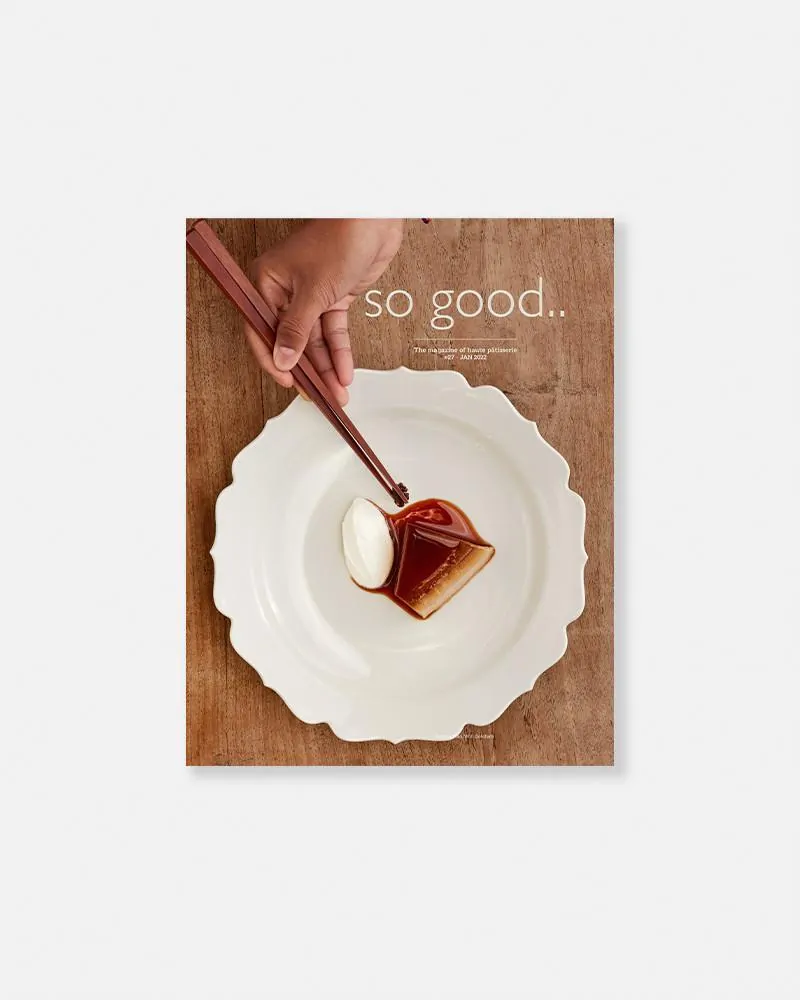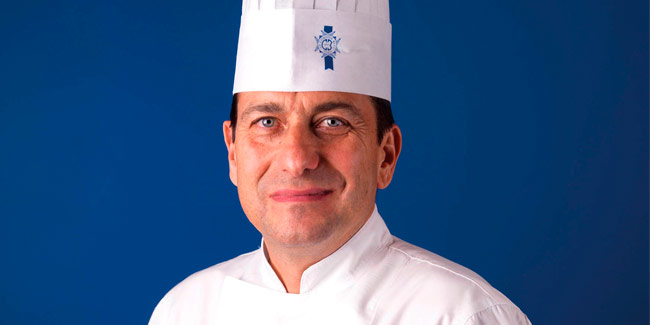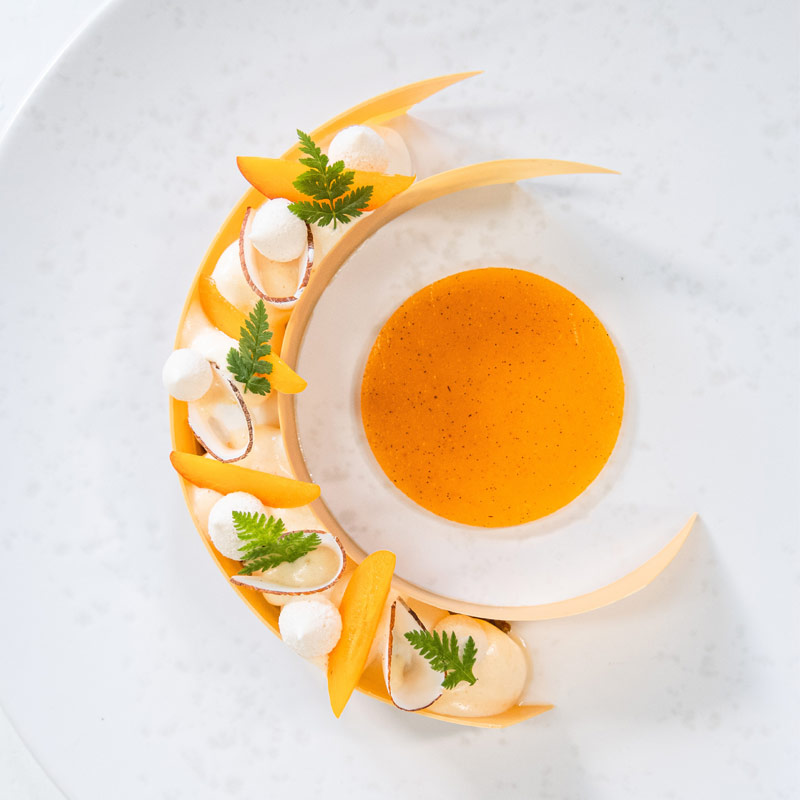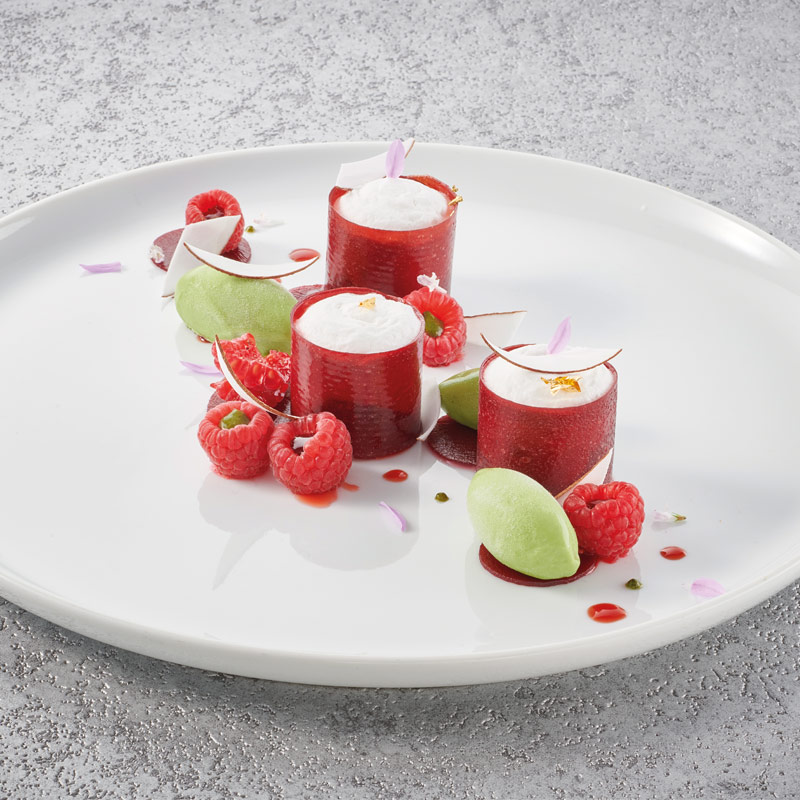Categories Pastry Chef Articles
Fabrice Danniel: ‘It is challenging and inspiring sourcing ingredients that can emulate dairy products’
Fabrice Danniel Gluten Free Le Cordon Bleu Pastry Interviews so good #27 Vegan Pastry
Author:
Jaume Cot
TAGS #
Fabrice Danniel Gluten Free Le Cordon Bleu Pastry Interviews so good #27 Vegan Pastry
Anyone without a blindfold could see it: concern for health, wellbeing and even ethics and ecology have become priority issues in the social debate. These are issues that now fully affect our diet and haute cuisine cannot and should not resist this trend; on the contrary, it should be seen as an opportunity. Pastry is no exception. At least that is what Fabrice Danniel and the Le Cordon Bleu Institute, which has just presented its Diploma in Patisserie Innovation and Wellness Programme, think. It is the result of months of intense work by this chef Head of the Pastry and Boulangerie Department, accompanied by the team of pastry teachers from the Paris and London centers, in which Emmanuele Martelli, Nicolas Houchet and Julie Walsh have been involved.
The start of this three-month course in Paris and London was a good opportunity for us to talk to those in charge and showcase it in so good #27. Le Cordon Bleu is one of the schools that has served most and best as ambassador and defender of what we all understand as ‘Haute Pâtisserie’. That is why they seem to be the best ones to share some considerations. Are there limits that should not be crossed when trying to make a healthier pastry? Do certain pastry preparations without cream, butter, eggs or gluten make sense? Fabrice Danniel has no qualms about addressing these questions and sharing with us some examples of this new way of understanding gourmand pastry, which you can enjoy in the full version of this article in the magazine. The pleasure of a good dessert must change, or at least this is what Danniel and his team propose below.
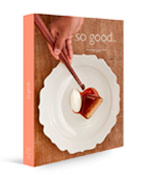
What is it like to search for alternative ingredients in terms of health, nutrition or wellness?
The search for alternative ingredients is founded on their health benefits, using good quality lipids with the lowest possible detrimental effect, little or no saturated fatty acids, with emphasis on essential fatty acids such as omegas 3.
Sugars have been chosen according to their mineral content and the lowest glycaemic index as well as a selection of various flours (brown rice flour, buckwheat, spelt…) to replace white flour (amino acids, gluten free, low glycaemic index).
For instance, is coconut oil healthier than butter?
Coconut oil contains saturated fatty acids (SFA) in the same way as butter, however the composition of fatty acids (medium and short chain) is less harmful to our health than butter’s SFAs. Coconut oil also does not contain cholesterol and therefore protects against cardiovascular disease. Among the saturated fatty acids of coconut oil, its high proportion of lauric acid is also beneficial to health and in addition meets the demands of vegetarians and vegans.
Today, we no longer work primarily on the quantity of sugar but on the quality of sugars.
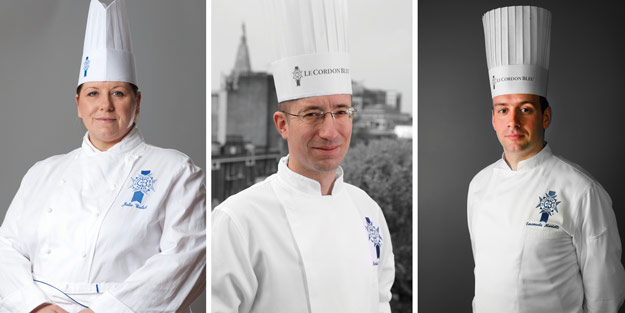
Does it make sense to use alternative sweeteners (muscovado, coconut sugar, maple syrup…) if you have to add more quantity to reach a similar sweet sensation when using common sugar?
Today, we no longer work primarily on the quantity of sugar but on the quality of sugars. These must provide minerals and have low glycaemic indexes preventing glycaemic fluctuations that are harmful to health.
Regarding the ‘gourmand pleasure’, is it the same to make a whipped ganache using cream than using any vegetable milk?
A dairy-based whipped ganache will procure a different pleasure in taste and texture to one made using vegetable milk or cream. It is challenging and inspiring sourcing ingredients that can emulate dairy products, all the while providing similar and satisfactory results in taste and appearance.
Alternative ingredients are used not to imitate exactly but to provide an alternative. This new trend in health-conscious patisseries provides an extra dimension to their flavor profile, provoking a difference in taste and textures.
What is it like tasting (and testing) the creations you are sharing with our readers?
Can you feel the difference because of the alternative ingredients you have used? Many tests and tastings are undertaken before a recipe is validated. The recipes included in this edition are different due to the blend of ingredients that have been used. Alternative ingredients are used not to imitate exactly but to provide an alternative. This new trend in health conscious patisseries provides an extra dimension to their flavor profile, provoking a difference in taste and textures.
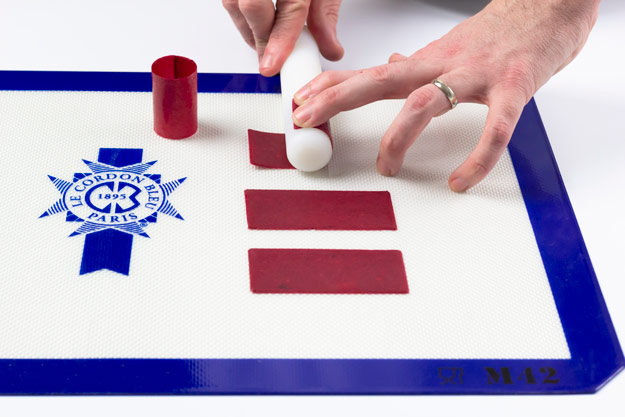
Other important figures of French patisserie claim for a gourmandise raisonée, i.e. to find the balance of health and patisserie. There are those also who do not want to give up to ingredients they feel like crucial in patisserie (eggs, cream, butter…) So what is it your opinion from this diploma? Is there any reason for controversial
The choice of these new ingredients responds to a demand for more healthy ingredients using less of the conventional dairy ingredients. The art is to make pastries that taste good, are technically adapted and use healthy ingredients. It is also possible to incorporate the notion of eco-responsible pastry by limiting the use of ingredients of animal origin which often have a high carbon footprint.
The art is to make pastries that taste good, are technically adapted and use healthy ingredients.
In the end, what are the boundaries (if there are any) of reformulating classic patisserie in order to achieve a more wellness or healthier outcome?
The main limit is the technicality of certain substitute ingredients which require adaptations, particularly in terms of proportions, to combine technicality with an optimal final result from a gustatory and aesthetic point of view.
How do you imagine the pastries of the big Parisian patisseries will be like within ten years? Will we perceive a lot of change from now?
Public awareness of health and sustainability is playing a greater role in gastronomy. Customers want to know which ingredients have been used to produce what they are eating, where the chocolate comes from, if the flour is organic. The younger generation is also increasingly concerned about biodiversity and recycling and is keen to have an organic diet. Even hotels are following this trajectory, with vegan brunches.
The patisserie sector is vast, constantly evolving and provides countless opportunities! The boutique concept is rapidly changing with, for example, numerous single product boutiques and vegan patisseries. Within ten years, it is reasonable to expect that there will be change, although it may not be too perceptible. Patisseries are constantly evolving and using less butter and sugar. A greater range of ingredients is used in several preparations. A more varied offer is available to those who are vegetarian, vegan, intolerant or even allergic to certain products.
Within ten years, it is reasonable to expect that there will be change, although it may not be too perceptible.
When the diploma is about to get started? How many time is it required to take it? In what LCB centers is it possible to apply for it?
The Pastry Innovation and Wellness Diploma is currently available in Le Cordon Bleu Paris and London institutes. It is a three-month programme available to Le Cordon Bleu Pastry graduates in addition to anyone having a professional certificate in pastry.
